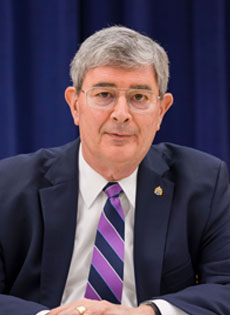
The MAD magazine caricature of U.S. Catholicism
Monday, January 15, 2024
George Weigel
One hesitates to begin the civil new year on a critical note, when hopes of a brighter future run high. But when reality is being falsified, duty calls. So, let’s begin the Year of Our Lord 2024 with a critique of the MAD magazine-like caricature of U.S. Catholicism currently being propagated.
During his years with the London-based Tablet, Christopher Lamb never evinced a serious understanding of the Church in the U.S. or its relationship to American public life. My personal experience of this involved his suggesting in early 2017 that I might be Donald Trump’s ambassador to the Holy See; Mr. Lamb was evidently unaware that I had publicly opposed Mr. Trump’s nomination and had begun my post-2016-election column with the lede, “The good news is she lost; the bad news is he won.” Such foolishness mattered little in the real world, though, given the Tablet’s relatively limited reach.
Now, however, Lamb is a Rome correspondent for CNN, with a global audience of far greater bandwidth. And he continues to display a cluelessness about U.S. Catholicism that is, in its way, breathtaking. Exhibit A was his recent article, “Pope Francis takes on unprecedented attacks from American opponents.” There, we “learn” that the Pope who has peremptorily removed bishops from their sees, denied devout Catholics a form of worship they find spiritually enriching, excoriated priests, criticized the sartorial interests of seminarians of whom he knows nothing, and warned the media against coprophagia is, at bottom, the Pope “who insists on a merciful Church open to everyone.” And according to Mr. Lamb, it was to advance that program of spreading divine mercy that Pope Francis recently took punitive action against Cardinal Raymond Burke and Bishop Joseph Strickland (who, along with traditional Latin Mass devotees — of whom I am not one — may well wonder about the range of papal inclusivity).
To make matters worse from a journalistic standpoint, the only witnesses cited in defense of today’s papal autocracy were such acolytes of the pontificate as Austen Ivereigh, David Gibson, and Massimo Faggioli — the functional equivalent of Tucker Carlson writing a piece entitled, “Donald Trump takes on unprecedented attacks from his opponents” and sourcing it with quotes from Marjorie Taylor Greene, Matt Gaetz, and Lauren Boebert. This isn’t journalism; it’s blatant advocacy. And it should be named as such.
2024 will see an intensifying debate over the complex legacy of Francis’s pontificate. That discussion will be stillborn if the cartoon of the merciful, open-minded Pope versus close-minded, anti-Vatican II U.S. Catholics becomes the dominant storyline. So, let’s get a few things straight about the Catholic Church in the United States.
First, the U.S. bishops are among the most loyal hierarchies in the world — an order of magnitude more loyal to Pope Francis and the Apostolic See than the German episcopate, which is currently defying the Pope’s orders to cease-and-desist with implementing a new and heterodox form of ecclesiastical governance.
Second, for all its difficulties and challenges, the American Church is the liveliest, most vital local Church in the developed world. Period. It is the local Church that has taken most seriously the Second Vatican Council, as authoritatively interpreted by Popes John Paul II and Benedict XVI. Its seminaries are the best in the Western world. U.S. Catholicism’s intellectual life is robust, dynamically orthodox, and culture-enriching — unlike Catholic intellectual life in those large swathes of western Europe where “Follow the Zeitgeist to Mordor” is the order of the day.
Third, U.S. Catholicism is evangelically vibrant, living what Mr. Lamb describes as the Pope’s call “to bring the Christian message to the world” far more energetically than the Church in Italy — or Argentina. Catholic campus ministry in the U.S. is experiencing a golden age, and FOCUS missionaries (a fruit of World Youth Day 1993 in Denver) now bring Christocentric evangelical dynamism to 193 campuses in six countries. Catholic schools in our inner-urban areas are effective instruments for empowering the poor (another priority of the Pope’s). Catholic crisis pregnancy centers extend divine mercy in a very tangible way. And anyone who has experienced the doldrums of parish life in other parts of the world must be impressed by the vitality of U.S. Catholic parishes, even as they struggle to claw back the ground lost during the Plague.
American Catholicism is striving to live the missionary discipleship for which Pope Francis called in the 2013 apostolic exhortation, Evangelii Gaudium. It’s doing so through dynamic orthodoxy, not Catholic Lite. If it’s too much to ask for that to be understood in Rome, perhaps it could be understood at CNN?
George Weigel’s column ‘The
Catholic Difference’ is syndicated by the Denver Catholic, the
official publication of the Archdiocese of Denver.


Comments from readers